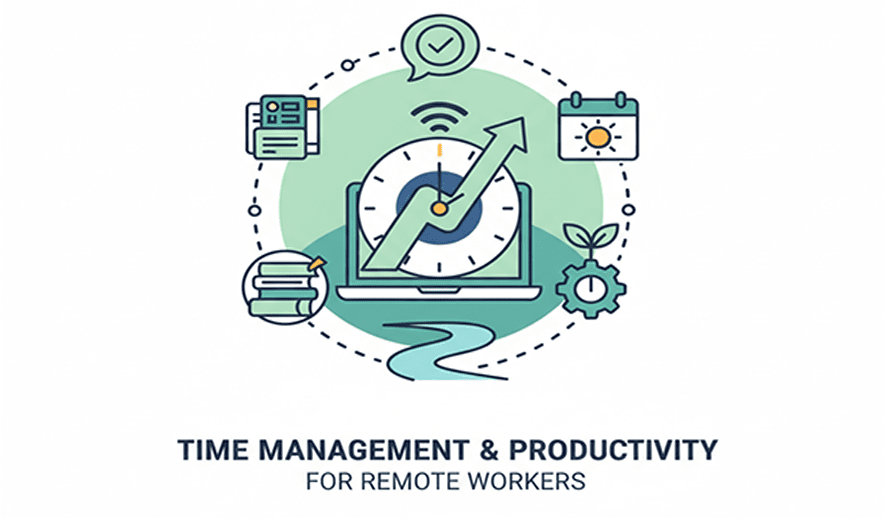
Time Management & Productivity for Remote Workers
Effective time management and productivity for remote workers can be approached from several different angles, encompassing routine-based strategies, technology-driven methods, and psychological techniques. A combination of these can help remote workers avoid common pitfalls like burnout and distraction while maximizing their output.
Routine-based strategies
For many remote workers, the lack of a structured office environment can blur the lines between professional and personal life. Establishing and maintaining a routine is critical for creating discipline and focus.
- Create a morning ritual. Instead of rolling out of bed and immediately checking emails, start your day with a non-work-related routine, such as exercising, meditating, or walking. This signals to your brain that the workday is beginning and helps you transition into a productive mindset.
- Designate a specific workspace. Having a physical boundary for your work helps create a mental boundary. Ideally, set up a dedicated home office. If that is not possible, work from the same corner of your kitchen table every day and put all work-related items away at the end of your shift.
- Set and publicize your work hours. Decide on clear start and end times for your day. Use communication tools like Slack or Google Calendar to broadcast these hours to your colleagues. This prevents after-hours distractions and helps your team respect your boundaries.
- Incorporate regular breaks. Taking short, frequent breaks can help prevent burnout and maintain focus. The Pomodoro Technique, which involves 25 minutes of focused work followed by a 5-minute break, is a popular method. Make sure to step away from your computer during these breaks.
- Develop an end-of-day routine. The ritual of "leaving the office" is important for mental health. Close your work apps, put your computer away, and do something to decompress, like listening to music or taking a walk. This signals the end of the workday and protects your personal time.
Technology-driven methods
Using the right software can help remote workers track their time, minimize distractions, and collaborate effectively.
- Time-tracking software: Tools like Toggl Track or Harvest allow you to track time spent on specific tasks. Analyzing this data can reveal where your time goes, identify inefficiencies, and help you allocate time more accurately for future projects.
- Project management platforms: Using a visual project management tool like Asana or Trello helps organize tasks and provide visibility into progress. This reduces time wasted on figuring out what to do next and provides clear deadlines.
- Focus apps: To combat digital distractions, you can use apps like Forest or RescueTime. Forest gamifies focus by growing a virtual tree while you work, and RescueTime monitors your activity to help you understand your productivity patterns.
- Asynchronous communication: For teams spread across different time zones, asynchronous communication can reduce the need for live meetings. Tools like Loom or shared documents allow team members to share updates and collaborate without needing to be online at the same time.
